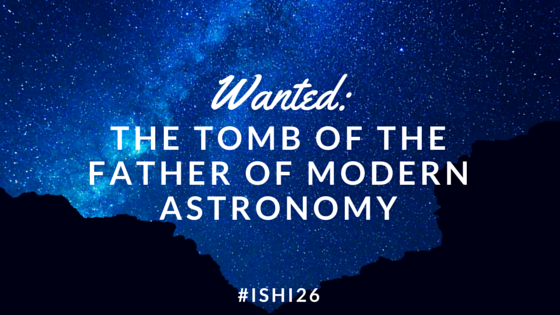Written by: Sara Klink, Promega
What do Swedish war booty, the Frombork Cathedral in Poland, and Napoleon all have in common? Answer: Nicolaus Copernicus. While much is known about the cleric and astronomer, the location of his burial site and the identity of his possible remains were cloaked in mystery. Over the last 200 years, many have searched for Copernicus’s grave including Napoleon in 1807. While it is known the astronomer was buried at Frombork Cathedral in 1543, there are over 100 unmarked tombs; as a result, searchers have walked away frustrated and empty handed.
In 2004, Polish scientists decided to try finding the tomb and narrowed the search to St. Cross Altar because Copernicus was in charge of this altar during his tenure as canon at Frombork Cathedral. Several skeletons were unearthed in this location, but facial reconstruction focused the analysis on one set of partial remains estimated to be 60-70 years of age.
To confirm that the selected skeletal remains were from a single individual, samples taken from the teeth remaining in the cranium were isolated and sequenced for the hypervariable region I (HVI) and II (HVII) of the mitochondrial genome in three independent laboratories. These sequences were compared to the HVI sequences derived from the femur fragments and showed that the remains were likely derived from the same individual.
How did the researchers get a reference sample to test for the astronomer’s identity? Unfortunately, any effort at tracking down the remains of known relatives such as his uncle Lucas Watzenrode or others of maternal lineage failed. However, Copernicus owned and extensively used the astronomical reference book, Calendarium Romanum Magnum by Johannes Stoeffler for many years, currently kept in an Upssala, Sweden museum, taken as “booty” after the invasion of Poland. Luckily, there were nine hair samples found among the pages, and mitochondrial DNA was sequenced from four of them. Two of the samples were identical to each other and the profiles generated by the skeletal remains.
DNA analysis went further than mitochondrial hypervariable regions, looking at 16 haplogroup informative SNP positions. The putative Copernicus samples put the remains in haplogroup H, the most frequent of the six European haplotypes and found in 40% of the population. The remains were also subjected to STR analysis with only six of the shortest markers and amelogenin amplifying. Amelogenin confirms the individual’s sex as male, agreeing with the physical identification on the skeleton. Further genotyping was performed using a 16-loci Y chromosome STR kit and the minimal haplotype was mirrored in men from Austria, Germany, Poland and the Czech Republic. Finally, one last SNP analysis of an evolutionarily conserved region within intron 86 of the HERC2 gene revealed the homozygous genotype C/C, indicating the skeletal remains belonged to a light-eyed man.
It has been two centuries since people began looking for the remains of Nicolaus Copernicus. His work, the De Revolutionibus Orbium Coelestium was the culmination of his years observing the sky and tracking the objects in it, introducing the idea that the earth revolved around the sun. Here on terra firma, many wanted to find and identify his remains. This study faced that challenge head on, and the collaborative effort using archeology, anthropology and molecular biology yielded a strong argument for the exhumed skeletal remains to be that of Nicolaus Copernicus.
Register for ISHI 26 to watch Marie Allen present Genetic Identification of the Putative Remains of the Famous Astronomer Nicolaus Copernicus during the General Sessions!
Additional Information:
Copernicus Biography
Nicolaus Copernicus
In Search for the Grave of Nicolaus Copernicus
Reference:
![]() Bogdanowicz W, Allen M, Branicki W, Lembring M, Gajewska M, & Kupiec T (2009). Genetic identification of putative remains of the famous astronomer Nicolaus Copernicus. Proceedings of the National Academy of Sciences of the United States of America, 106 (30), 12279-82 PMID: 19584252
Bogdanowicz W, Allen M, Branicki W, Lembring M, Gajewska M, & Kupiec T (2009). Genetic identification of putative remains of the famous astronomer Nicolaus Copernicus. Proceedings of the National Academy of Sciences of the United States of America, 106 (30), 12279-82 PMID: 19584252


